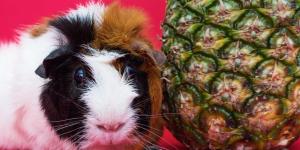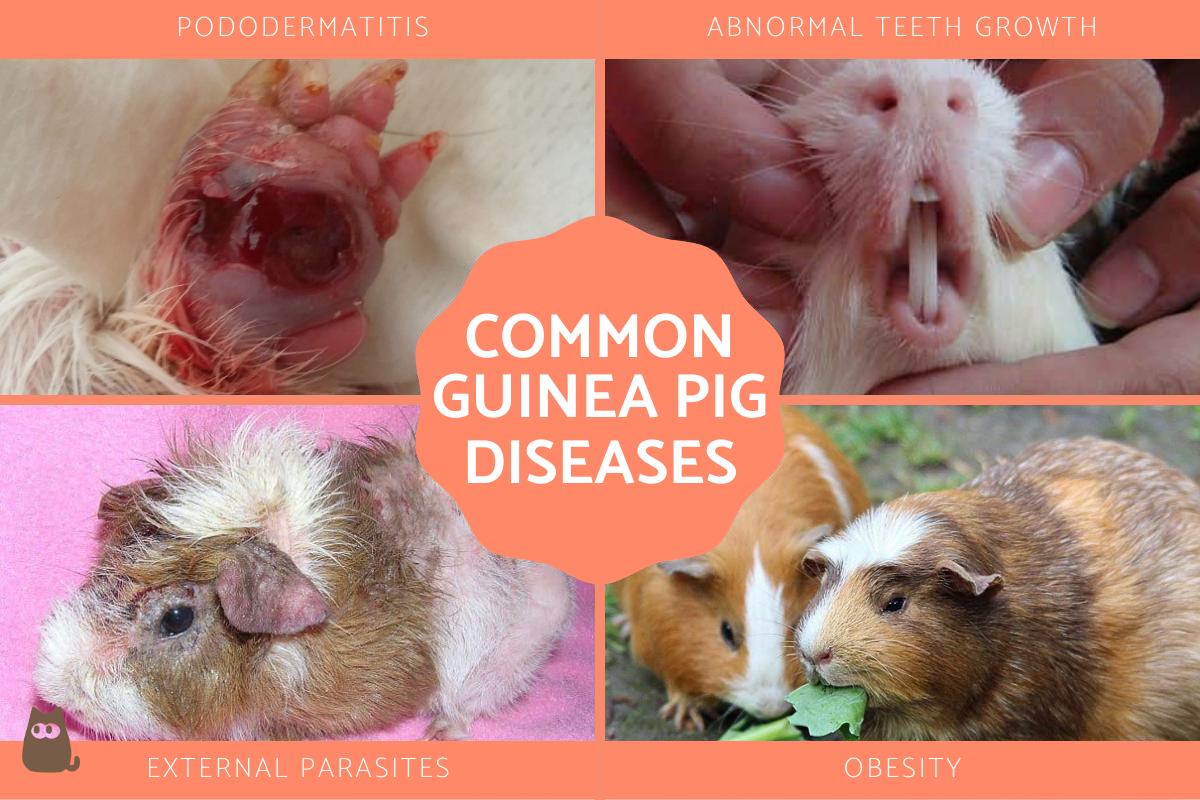Most Common Guinea Pig Diseases

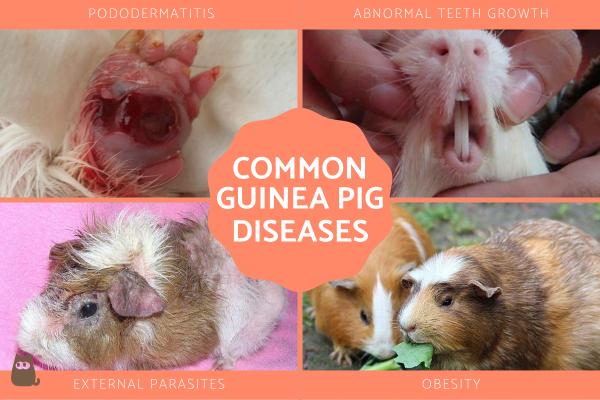
Guinea pigs are becoming increasingly popular and pets, especially for young people. This is partly due to their relatively easy levels of care. It does not mean they are disposable, nor are they impervious to disease. As with any companion animal, maintaining the right level of care will help to avoid diseases commonly associated with guinea pigs. However, there are many factors involved in a guinea's pig state of health and the unexpected can happen.
AnimalWised helps you to be prepared with our guide to the 6 most common diseases in guinea pigs. We find out the health problems to which cavies are most susceptible and we explain the causes, symptoms and treatment of each one.
1. Bumblefoot (ulcerative pododermatitis)
The first of the most common guinea pig diseases is pododermatitis. This is a progressive chronic pathology that affects the plantar area of the feet of guinea pigs. As a consequence of various predisposing factors, a lesion forms on the plantar area of the metatarsal. When this becomes infected by bacteria, it progressively affects deeper tissues forming ulcerations and resulting in ulcerative pododermatitis.
Commonly known as bumblefoot, it also affects other rodents, as well as rabbits and birds. Bumblefoot is a very common disease in obese guinea pigs, often influenced by abrasive substrate and a lack of hygiene in their environment. It is a disease of multifactorial etiology, i.e. there are multiple factors that contribute to its appearance.
Some of these factors that cause pododermatitis in guinea pigs are:
- Inadequate housing: often due to very abrasive substrates that erode the skin of the extremities or even a complete lack of substrate.
- Poor hygiene in the substrate: a lack of cleaning and high-humidity favors the proliferation of pathogenic microorganisms which can lead to pododermatitis.
- Poor body condition: as is the case with obese guinea pigs.
- Existence of dermatitis: in the plantar area of the metatarsal.
- Secondary infections: if a guinea pig receives trauma to the foot, the wound can become infected.
- Other: presence of concomitant diseases such as arthritis, diabetes, etc.
Depending on its severity, pododermatitis is classified into 5 grades. This ranges from grade I, where only a slight loss of hair and redness of the plantar area is observed, all the way to grade V, where the tendons and bones are affected.
Treatment for pododermatitis in guinea pigs
The treatment of pododermatitis is based on:
- Correct handling: environmental conditions and level of hygiene should be improved. In addition, dietary management should be improved to correct obesity.
- Antibiotics: topical or systemic routes to treat the infection.
- Disinfection and treatment of plantar lesions: baths of the extremities with antiseptics should be carried out. In lower-greade pododermatisi, ointments can be used to keep the skin hydrated and preserve its integrity.
- Laser therapy: to promote healing.
- Surgery: in severe cases, surgical cleaning and debridement of the wound is necessary. Afterward, padded dressings and bandages should be applied to protect the limb.

2. Abnormal teeth growth
As with rabbits and some other animals, guinea pig teeth never stop growing. Throughout their lives, their teeth will extend from their gums perpetually, being worn down by the animal through chewing hay, wood blocks and other objects. If something negatively affects this growth or they are unable to sufficiently wear down their teeth, abnormal growth occurs which can be very painful for the animal. It is usually causes by:
- Improper diet: this is is the main cause of abnormal teeth growth in guinea pigs. Guinea pig feed requires less chewing time than hay. If a cavy has too much feed and not enough hay, they may be able to meet their nutritional requirements, but their dentition will be negatively effected and they will suffer from dental overgrowth.
- Congenital defects: animals with an anatomical malformation that prevents the correct wear of the teeth.
- Trauma or dental tumors: when they bite something hard, are in an accident or they develop a tumor, it can cause a deviation of the teeth and prevent their adequate wear.
The initial clinical signs are usually excessive salivation, anorexia, malocclusion and swelling of the cheeks. If anorexia is prolonged, it can cause the death of the animal. Although
Treatment for dental overgrowth in guinea pigs
Treatment of dental overgrowth in guinea pigs may include:
- Change of diet: a correct proportion between hay (70%), feed (10%) and fresh food (20%) must be maintained to guarantee proper wear of the teeth and prevent the problem from reappearing. Learn more with our article on fruits and vegetables for guinea pigs.
- Cutting of incisors or periodic filing: can be done at home, but a professional will need to be involved if we do not know what to do.
- Extraction of teeth: in case the recovery of the dental pieces is unfeasible.
- Analgesia: it is a very painful process, so it is important to establish an adequate pain management treatment against.
Although dental problems are one of the most common guinea pig diseases, not all veterinarians are qualified to treat them. For this reason, you will need to speak to an exotic animal vet.
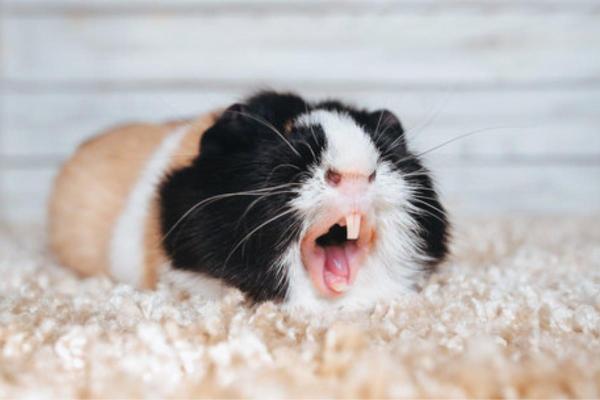
3. Vitamin C deficiency (hypovitaminosis C)
As with humans, primates and some bats, guinea pigs are not capable of synthesizing vitamin C on their own. This makes it an essential vitamin for guinea pigs, meaning they need to obtain it through their diet to meet their nutritional needs.
Daily vitamin C requirements in adult guinea pigs are estimated to be between 5-30 mg per kg of body weight. These requirements may be increased in some situations such as gestating, lactating or sick guinea pigs.
When vitamin C levels are low, a clinical picture of hypovitaminosis occurs characterized by the following symptoms:
- General signs such as anorexia, weight loss and lethargy
- Generalized anemia and hemorrhaging
- Poor wound healing
- Immunosuppression and increased risk of infections
- Gingivitis
- Alterations in the dentin and loose teeth
- Musculoskeletal disorders in newborn guinea pigs
Treatment for vitamin C deficiency in guinea pigs
The easiest way to meet vitamin C requirements is by supplying raw vegetables rich in vitamin C, such as green peppers, green carrots and strawberries. As with many of the most common guinea pig diseases, proper diet can help prevent their development.
In case of clinical hypovitaminosis C, it is necessary to supplement vitamin C orally (30-50 mg per kg of weight, every 12 hours). It will also be necessary to establish a symptomatic treatment based on the signs or injuries that the animal presents. These are treatments guided by a veterinarian who will assess when vitamin C supplements are required and whether they can stop.
Learn more with our article on the importance of vitamin C in guinea pigs.
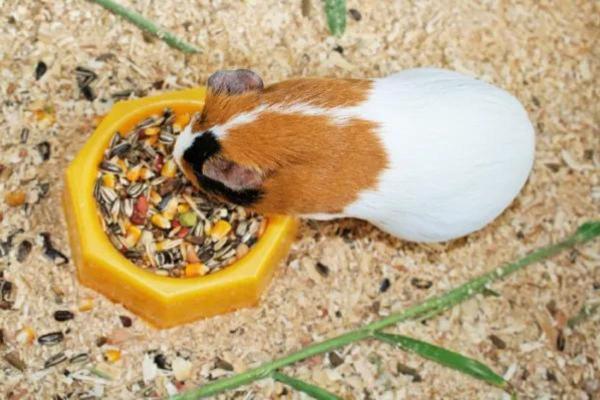
4. Respiratory infections
Respiratory infections are contagious diseases of guinea pigs that cause high morbidity and mortality in these rodents. The most frequent causative agents are the following types of bacteria:
- Bordetella bronchiseptica
- Streptococcus pneumoniae
- Staphylococcus
It is worth mentioning that some of these pathogens (such as Bordetella) can also be transmitted between rabbits and guinea pigs. Generally, they are pneumonic processes that occur with general signs of respiratory distress such as nasal discharge, ocular discharge, coughing and sneezing.
Treatment for respiratory infections in guinea pigs
Treatment of respiratory infections should include:
- Antibiotics: for a minimum of 7 days, to end the infection. The type of antibiotic used will need to be determined by a veterinarian.
- Fluid therapy: to avoid dehydration of the animal.
- Mucolytics and bronchodilators: to help expel mucus and make breathing easier.
- Vitamin C: to promote the proper functioning of the immune system.
Although common diseases in guinea pigs, if respirtatiry infections are not treated in time, they can be complicated by the development of fibrinopurulent pneumonia and pleurisy. When any respiratory sign is detected in guinea pigs, it is important to go to a veterinary center specialized in exotic animals as soon as possible to establish early treatment.
Since some of these signs are generalized, take a look at our article to know how to tell if a guinea pig is sick.
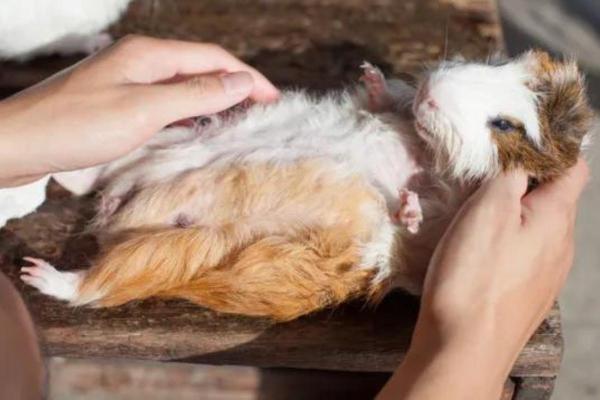
5. External parasites
Dermatological pathologies are also common diseases in guinea pigs, being one of the main reasons for veterinary consultation in this animal. Although they can be affected by internal parasites, ectoparasites (external parasites) are the main cause of these pathologies.
Some of the most common ectoparasites in these rodents are:
- Mites: such as Demodex caviae, Trixascarus caviae and Chirodiscoides caviae.
- Lice: such as Gliricola porcelli and Gyropus ovalis.
In most cases, external parasites are subclinical and have few evident signs of disease when the animals are immunocompetent. However, in any situation that generates immunosuppression in guinea pigs (such as stress, pregnancy, hygiene deficit, environmental or nutritional changes), it is common for clinical dermatological signs to appear. These clinical signs of external parasites in guinea pigs include:
- Skin lesions: such as alopecia, redness, hyperkeratosis, peeling, wounds, and scabs
- Itching: seen when the animal tries to scratch themselves intensely.
- Anorexia: leading to weight loss.
Treatment of external parasites in guinea pigs
The treatment of ectoparasites in guinea pigs should include:
- Antiparasitics: enerally, macrocyclic lactones such as ivermectin or selamectin are used. An amitraz bath may be used as a form of complimentary therapy.
- Anti-inflammatories: they will not be necessary in all cases of ectoparasitosis, but they will be necessary when there is very intense itching or inflammation associated with the dermatopathy.
- Treatment of itching: in guinea pigs with very intense itching, diazepam can be added to the treatment, to reduce the stress caused by itching.
All of these treatments need to be determined by a veterinary professional. Learn more about what to expect from an infestation with our articles on mange in guinea pigs and lice in guinea pigs.
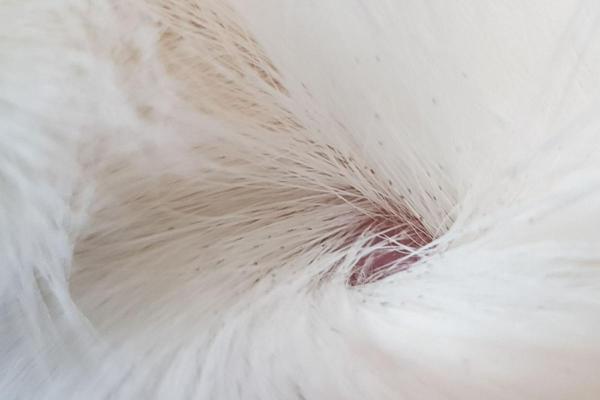
6. Obesity
Guinea pigs are animals with a particular tendency toward obesity. This problem commonly appears as a result of the combination of two factors:
- Poor diet: the diet of guinea pigs should be composed of 70% hay, 10% dry food and 20% fresh food. Within the fresh food category, the vast majority (75%) should be leafy vegetables (such as spinach, Swiss chard, arugula, lamb's lettuce, escarole, etc.) and only the remaining 25% should be made up of other vegetables and fruits. When this proportion is not maintained, such as providing an excess of guinea pig feed or fresh food, it is common for guinea pigs to suffer from obesity.
- Insufficient physical activity: small cages and poor environmental enrichment encourage inactivity in guinea pigs, which favors weight gain.
Obesity predisposes the appearance of various diseases in guinea pigs such as arthritis, pododermatitis, etc. It is essential to properly handle these animals to maintain an optimal body condition given their individual state of health.
Treatment for obesity in guinea pigs
The treatment of obesity in guinea pigs is based on the correction of the factors that trigger its appearance:
- Improvement of dietary management: the content of feed and fresh food should be restricted, without affecting the supply of essential nutrients (such as vitamin C). Hay should always be available at all times.
- Increased physical activity: environmental enrichment should be provided with a suitable cage size and various toys that allow the animal to exercise both physically and mentally. It is also necessary to offer daily time outside the cage in a controlled room or enclosure so they can explore and develop their curiosity.
This article is purely informative. AnimalWised does not have the authority to prescribe any veterinary treatment or create a diagnosis. We invite you to take your pet to the veterinarian if they are suffering from any condition or pain.
If you want to read similar articles to Most Common Guinea Pig Diseases, we recommend you visit our Other health problems category.



